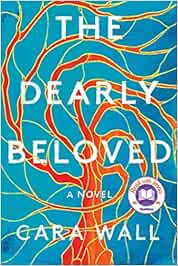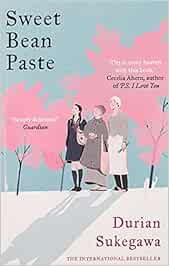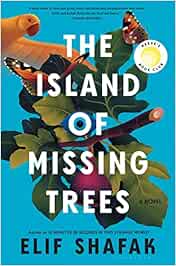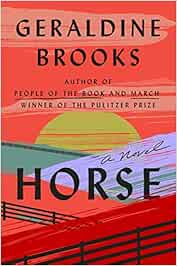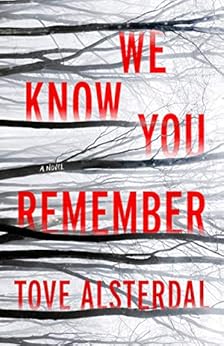4 Stars
I hesitated to read
this book because it is about horseracing, a sport in which I have little interest. But since I’ve enjoyed other novels by Geraldine
Brooks, I decided to read
Horse. Once again I was impressed with the author’s
polished storytelling. (And the novel is
about much more than horseracing.)
Two Black men are the
central characters in this novel. In
1850, thirteen-year-old Jarret, an enslaved black boy in Kentucky, is present
at the birth of a foal. That colt
becomes Lexington, “the greatest racing stallion in American turf history” and “the
greatest thoroughbred stud sire in racing history.” Though both Jarret and Lexington are sold
more than once, they have a deep rapport and Jarret remains part of Lexington’s
life until the horse’s death in 1875.
The second Black
protagonist is Theo Northam. In 2019, he
is a doctoral student in art history in Washington D.C. when he rescues a
discarded painting of a racehorse. By
chance, he meets Jess, an osteologist at the Smithsonian who has found
Lexington’s skeleton in an attic of the Smithsonian. As the two research the provenance of the
painting, the reader is given the point of view of Thomas J. Scott, an itinerant
equine artist who paints several portraits of Lexington, and Martha Jackson, an
art dealer in 1950s New York who comes into possession of one of those
portraits.
The narrative pace is
leisurely at first as the reader is introduced to the various characters. Then suspense is gradually built. In the sections set in the past, Jarret’s
welfare is often at risk since he can be bought and sold and separated from
Lexington at any time. There are some
cliffhanger endings; for instance, one chapter ends with “Something had
happened to this horse when it was alive.
Something dreadful.” And there is
certainly tension in the races in which Lexington competes.
The book examines
antebellum horseracing which was the sport of white privilege relying on the
exploited labour of Black horsemen. The
inclusion of Theo’s story, however, emphasizes that racism persists into the
present. Though Jarret and Theo are separated
by 170 years and come from entirely different social and economic classes, they
both endure racism. Though the son of a
man who had purchased his own freedom, Jarret is considered property and
treated as such: “Obedience and docility: valued in a horse, valued in an enslaved human. Both should move only at the command of their
owner. Loyalty, muscle, willingness –
qualities for a horse, qualities for the enslaved.” Just as Lexington is exploited for maximum
financial gain, Jarret is exploited for his skill with horses. Theo, the son of diplomats and a student at
an elite British boarding school, becomes a star polo player but leaves the
team because of the racism he encounters.
In Washington, his attempt to help a white neighbour is met with “the
usual gust of anger.”
The point is that
racism has not been eradicated. Enslaved
men like Jarret were regarded as inherently dangerous and were murdered without
consequence. Mary Barr Clay, the
granddaughter of one of Jarret’s owners, visits Jarret and he is immediately
anxious to have her leave, telling her “’they gonna skin me standing if anybody
come by and find you here.’” Likewise,
Theo’s neighbour seems afraid of him and sees him as a threat. When he goes running, he wears “branded,
elite-university apparel” because “his favorite run took him through lily-white
Northwest Washington and Daniel, his best friend at Yale, had instructed him
that a Black man, running, should dress defensively.”
There are some
elements that had me puzzled. The Martha
Jackson section detailing her connection to Jackson Pollock seems
superfluous. Though multiple
perspectives are given, third person narration is used for all characters,
except the artist, Thomas Scott. Why is
he given his own voice? There are
several coincidences that detract: Theo’s
PhD thesis is about “’elements of nineteenth-century American equestrian art.’” He finds a painting of a horse and shortly
afterwards meets Jess who has found a horse’s skeleton - and both are of Lexington. I was also irked by the melodramatic plot
twist at the end, the once concerning the special request made by a painting’s
seller.
This book may cause
some controversy; doubtless, some will accuse the author of cultural
appropriation: what is a white woman doing
writing from the perspectives of an enslaved man and a bi-racial man? Interestingly, she does acknowledge Frederick
Douglass’s argument that Whites cannot accurately depict Blacks because Whites cannot
see “past their own ingrained stereotypes of Blackness.” Perhaps to avoid any accusations of
stereotyping, Brooks has her Black characters, especially Theo, Jarret, and
Jarret’s father, be handsome men with few negative traits; they are intelligent
and always behave better than the white characters. I couldn’t help but notice that they also
have close connections with animals.
Certainly, Brooks shows empathy for her Black characters. On the other hand, white characters like Jess
and Mary are often clueless. Tess, for
instance, when she first sees Theo, thinks he is stealing her bicycle, though
she later describes feeling traumatized by her appalling behaviour: “Typical, Theo thought. He’d been accused, yet she was traumatized.” Scott says he doesn’t “’hold with slavery’”
but Jarret thinks, “Might not hold with
it, . . . But don’t mind holding the cash that comes from it.”
It is Scott who makes
a comment that is undoubtedly supposed to remind the reader of the current
political atmosphere in the U.S.
Initially he is sympathetic towards Confederate prisoners he encounters,
thinking of them as pawns, and talks with them “to better know their minds.” Eventually he gives up because, “They were,
all of them, lost to a narrative untethered to anything he recognized as
true. Their mad conception of Mr.
Lincoln as some kind of cloven-hoofed devil’s scion, their complete disregard –
denial – of the humanity of the enslaved, their fabulous notions of what evils
the Federal government intended for them should their cause fall – all of it
was ingrained so deep, beyond the reach of reasonable dialogue or evidence.”
I appreciate a book
which introduces me to new vocabulary: jussive, subfusc, egisted, eisteddfod, and bruit.
Reading this book is
an emotional journey; anger and sadness are felt in equal measure. Its examination of racism might mean it will soon
appear on lists of banned/challenged books in the U.S., but I highly recommend it.
